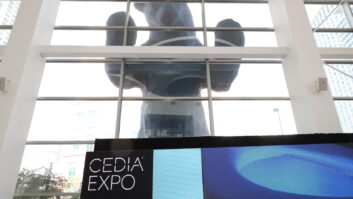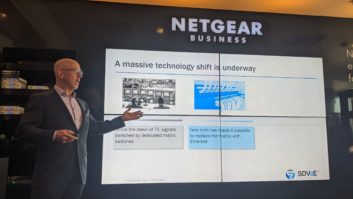Last month’s 3D Printing Week and the 3D Printshow in New York brought together more than 11,000 3D printing enthusiasts and at least one curious editor in chief.
The long-discussed promise of 3D printing was on display in hundreds of forms: 3D-printed dresses, figurines, toys, sculptures, candy, shoes, musical instruments, sex toys … you name it. The event’s mantra was summed up by one exhibitor, who described 3D printing as “the next industrial revolution.”
Heady words, but not outlandish when you think about it. The real promise of 3D printing is the concept of instant manufacturing from an idea. If you can dream it, you can build it, sometimes within hours. And the more I thought about it, and the more I observed, the more I realized what a truly disruptive technology it really is.
At the last two International CES kick-off press conferences, economist Shawn DuBravac spoke of the beginnings of the “mass customization” revolution. (He also writes about it in his excellent book “Digital Destiny.”) The idea is that technology has allowed commodities that have been traditionally mass produced — think Nike sneakers or Hershey’s chocolate bars — to be customizable at a consumer’s whim. Manufacturers embraced the idea and attracted loyal customers by offering customization options.
3D printing takes that to a new level. Once the technology becomes cheap enough and lead times become short enough, the clock may be turned back on mass production as we know it. No need to outsource production, deal with tooling, or economies of scale. It can lead, ironically, to a huge step back in time, before the industrial revolution, when all manufacturing was local. You needed horseshoes; you went to the local blacksmith. You needed a chair; you went to the local woodworker.
Avi Reichental, president and CEO of South Carolina-based 3D Systems, said, “Technologies like 3D printing are returning us to our roots. That means back to a hyper-local model in which you can make what you need, bespoke, customized, made for you, fit for you.”
And while plastic gadgets are the reality of 3D printing today, the technology is being adapted for all sorts of materials, including metals, organic materials and even chocolate.
But what does that mean for the CE business? Well, for one, it opens the door for entrepreneurs with an idea and a dream to compete with larger companies, when in the past, the greatest challenge start-ups faced was getting their product manufactured.
It also can benefit larger companies that can bring back production from overseas and localize their inventory and supply chain. That would probably go a long way in bringing back manufacturing jobs to Americans.
For retailers of 3D printers, the consumer market seems limited, at least for the near future. (Ask Makerbot, which just closed all its stores.) It’s hard for a consumer to justify owning a 3D printer at this point. But a model based on the old photo processing business could work. You drop off (via email) your design at the local retailer and pick up your finished 3D-printed object the next day.
3D printing is a fascinating segment of the business, even in it’s infancy. I look forward to watching it fulfill its promise.













